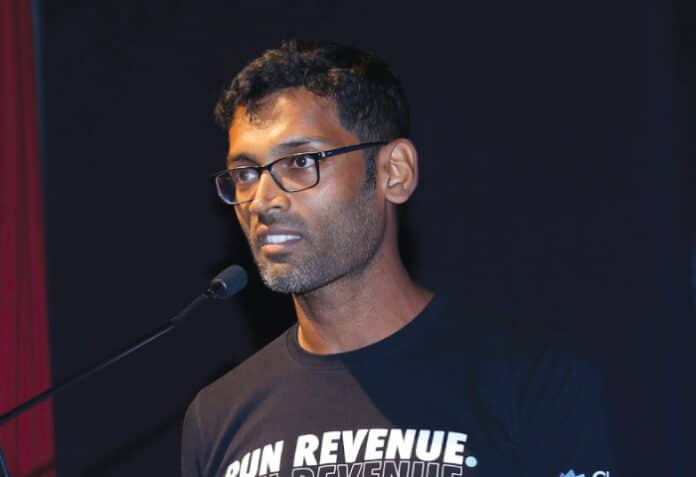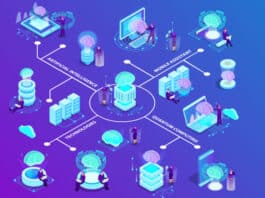Clari, a revenue collaboration and governance platform, has expanded its reach to over 1500 customers spanning the US, Europe, and Australia. Originally conceived as a forecasting app, Clari now seamlessly manages revenue processes across various tools. In a conversation with OSFY, Srikar Yekollu, Site Architecture and Data Science Head, Clari, reveals how Clari harnesses the power of open source to address revenue process fragmentation across teams.
Q. Please give us a brief background about Clari and its presence in India.
A. Clari was started in the San Francisco Bay Area, California in 2013, and continues to have its headquarters in Sunnyvale, California. The India Innovation Centre, started in 2018, has grown to 150 employees and is a key part of our global innovation ecosystem. Clari is a revenue collaboration and governance platform that addresses the challenge of managing revenue processes across different tools. It manages the fragmentation of revenue processes across different teams such as sales, marketing, business development, customer support, and CXOs. These teams are operating processes such as sales kick-off and forecasting across different general-purpose software tools including spreadsheets, CRMs, and diallers. We were the first to bring all this together — people, processes, data — on a single platform to run revenue and prevent revenue leak. We have more than 1500 customers located across the US, European, and Australian markets.
Q. What are the different types of products and services that Clari offers?
A. Clari started as an app that provided forecasting abilities, allowing revenue teams to answer the question, “Will I meet, beat, or miss my revenue target in the coming quarter?” Customers jokingly referred to us as ‘Scary Clari’ as our quarterly forecast would get ‘scarily’ accurate within the first few weeks of the quarter!
We offer a complete revenue platform that executes all internal and external revenue workflows—including sales engagement, conversational intelligence, deal management, revenue forecasting, mutual action plans, and data capture and ingestion. The latest addition to the platform is sales prospecting, which helps sales teams reach out to prospective customers. The platform includes a revenue database, RevDB, with US$ 1.5 trillion in revenue under management, and RevAI, an AI solution to provide teams with answers to critical revenue questions and enable them to take quick and precise action.
Q. How would you define open source and its impact on software development?
A. Without open source, we would not know SaaS as we know it today. Most tech would be locked within big companies that would, in turn, stifle innovation. Most businesses would either be stuck reinventing the wheel or unsuccessful behind thinner margins.
Q. What role does open source play at Clari, and how is it beneficial?
A. While cost is a key reason for using open source, it is not the only driving factor. Cost savings help us improve our margins, and also allow us to transfer savings and value onto our customers. Open source also provides flexibility that does not tie us to vendors and gives control back to us, which in turn helps us provide stable services to our customers. The transparency provided by open source improves security, which is extremely critical given the kind of sensitive and business-critical revenue data we manage.
Q. Are there any broad open source packages or platforms that Clari uses frequently?
A. Open source permeates across Clari infrastructure all the way from infrastructure orchestration (Kubernetes), microservice orchestration, and observability (Grafana, Prometheus) to Infrastructure as Code (Terraform). Open source also dominates our AI/ML efforts through its use for generative AI, transcription, and diarisation.
Q. What are some of the interesting tech challenges being solved by Clari?
A. Delivering a low latency yet configurable experience with high-volume data is a formidable challenge. This spans building efficient ETL (extract-transform-load) pipelines, data models, and indexing strategies. With the new era of large language models (LLMs) and their abilities, Clari is in a unique position to make use of this technology to help users process the millions of hours of sales call transcripts that we already have access to from the past few years. The challenge is to build more efficient models that are less CPU-hungry and achieve a delicate balance between performance and appetite.
Q. How are open source text embedding models utilised to understand customer needs and preferences?
A. Open source text embedding models give us the necessary control to customise the model to understand and respond to revenue questions. They allow for smaller specialist models in lieu of larger generalists. These, in turn, translate to better latencies and lower costs.
Q. What kind of challenges do open source AI tools face when handling large datasets?
A. Most popular open source projects are built to scale for large datasets. Running them at scale is still an important challenge that Clari solves by building the right team and investing in the right set of tooling and processes to run them. For example, the choice to invest in Ray Data as a solution for training and serving thousands of models across Clari’s large customer base was a winning strategy.
Q. Regarding sensitive revenue-related data, what are the security considerations when integrating open source in your product?
A. The transparent nature of open source projects allows us to harness the power of a community to help in rapidly identifying security issues. This effect is magnified for popular open source projects that allow a larger community to find and patch security concerns. This allows Clari security and engineering to control the timelines, which are critical given the sensitive nature of revenue data.
Q. How do you manage any potential interoperability issues arising from variations in open source solutions?
A. Being closely aware of open source releases and actively participating in tracking and contributing to the advancements, allows us to plan for our tech stack. This ensures that we leverage the latest developments, maintaining a state-of-the-art that is stable and secure. This gives us enough time to foresee and address interoperability concerns.
Q. What role does open source play for startups and defining their go-to-market strategies?
A. Open source plays a key hiring role within startups, making it easier for them to hire engineers who need less training and, in turn, helping teams iterate faster on their go-to-market strategies that are tied to feature launches. The other benefit continues to be cost.
Q. Who looks after the open source compliance and licensing domain at Clari?
A. Our legal and security teams do so.
Q. Does Clari contribute to any open source projects?
A. We have been contributing to Netflix Conductor.
Q. Can you recollect and share your first encounter with open source?
A. Linux was my first and most memorable encounter with open source. This really sunk in when I was able to modify a part of the file system to be able to work over FTP.
Q. What exciting plans do you have coming up on Clari’s tech roadmap?
A. Building custom models for a large set of enterprise customers poses a challenge in efficiently serving these sizable models, presenting a complex infrastructure issue. Maintaining observability is crucial to prevent model drift and track performance. The challenge extends to serving these models at a low cost, as powerful vCPUs can lead to substantial AWS bills. Traditional keyword search methods like BM25 fall short in answering nuanced questions such as, ‘Why did we lose this deal?’ based on call transcripts. Current LLMs have limitations due to their quadratic time complexity. Clari plans to tackle all these challenges to unlock the potential for significant advancements in product capabilities.




